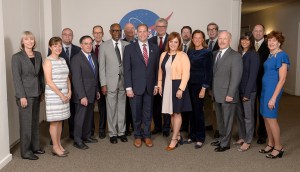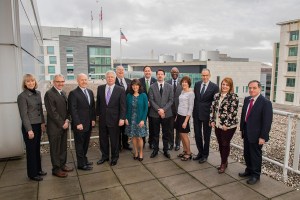Current Meeting
NASA Advisory Council (NAC) Meeting
October 1 – 2, 2024
Marshall Space Flight Center
NASA Advisory Council – October Meeting Notice (September 11, 2024)
NASA Advisory Council – October Meeting Agenda (October 2, 2024)
Day 1 – October 1, 2024
Diversity, Equity, Inclusion and Accessibility
Program Management and Acquisitions
Technology, Innovation and Engineering
Day 2 – October 2, 2024
STEM Engagement Committee Report
Human Exploration and Operations
NAC Members

About Us
Background
The National Aeronautics and Space Administration has a long tradition of turning to accomplished citizens for advice and guidance on major program and policy issues before the agency. This tradition originates with NASA’s predecessor organization, the National Advisory Committee for Aeronautics (NACA). Established in 1915, the NACA became the United States’ premier aeronautical research institution; it was governed by an advisory committee appointed by the President of the United States. The NACA’s “main committee” served as a board of directors, and a group of research advisory committees guided the NACA’s research in specific areas.
With the creation of NASA in 1958, the NACA was abolished, and its research centers Ames Research Center, Lewis Research Center , and Langley Aeronautical Laboratory were incorporated within the new space and aeronautics agency along with some elements of the U.S. Army and U.S. Navy, then engaged in rocket-related work. The tradition of turning to nongovernment sources for independent judgment and guidance survived, however, as NASA established new advisory committees to assist it with planning for its new and continuing responsibilities in aeronautics, space technology, space science and applications, and human space flight.
In 1967, the U.S. Congress directed NASA to form an Aerospace Safety Advisory Panel (ASAP) to advise the NASA Administrator on safety issues and hazards in NASA’s aerospace programs. The Congress envisioned a continuity of membership and a degree of professional technical expertise for the ASAP that makes it unique in NASA’s advisory committee structure to this day. By 1971, the principal sources of advisory committee support for the NASA Administrator, in addition to the ASAP, were the Space Program Advisory Council and the Research and Technology Advisory Council and their subcommittees focused on particular aerospace science and engineering disciplines. These two advisory committee structures, which enjoyed notable success in the approximately six years of their existence, were combined in 1977 to form the NASA Advisory Council (NAC) and its standing committees focusing on specific program areas. The Council, first chartered on December 12, 1977, held its first meeting on May 1 and 2, 1978.
The NASA Advisory Council members are chosen by NASA and serve at the pleasure of the NASA Administrator. They provide consensus advice and make recommendations to the NASA Administrator. NASA also receives advice from two other external independent advisory committees, the National Academies’ Space Studies Board (SSB), and Aeronautics and Space Engineering Board (ASEB). The chairs of these two Academy Boards serve as ex officio nonvoting members of the NASA Advisory Council to provide continuity and insight.
NASA Advisory Council Meetings
The NASA Advisory Council is subject to the Federal Advisory Committee Act (FACA). Consequently, the meetings of the Council are open to the public unless they deal with specific matters qualifying for exemption under the Government in the Sunshine Act. Meetings are announced in advance by NASA in the Federal Register.
The Council meets several times a year for fact finding and deliberative sessions. Meetings are held at NASA Headquarters in Washington, DC, as well as at NASA Centers across the country. Committee meetings may be held immediately prior to full Council meetings, or at different times and locations.
The records and files of the Council are maintained by the Council Executive Director. Copies of these records are available to the public upon request, subject to the exemptions allowed in the Freedom of Information Act (FOIA).
NASA Advisory Council Staff Support
Executive Director and staff support for the Council is provided by the Advisory Committee Management Division, NASA Headquarters. The Council’s committees and subcommittees are also supported by Executive Secretaries and staff assigned from the NASA program area relevant to each respective group.
Management and legal compliance oversight for all of NASA advisory committees is provided by the NASA Advisory Committee Management Officer.











































